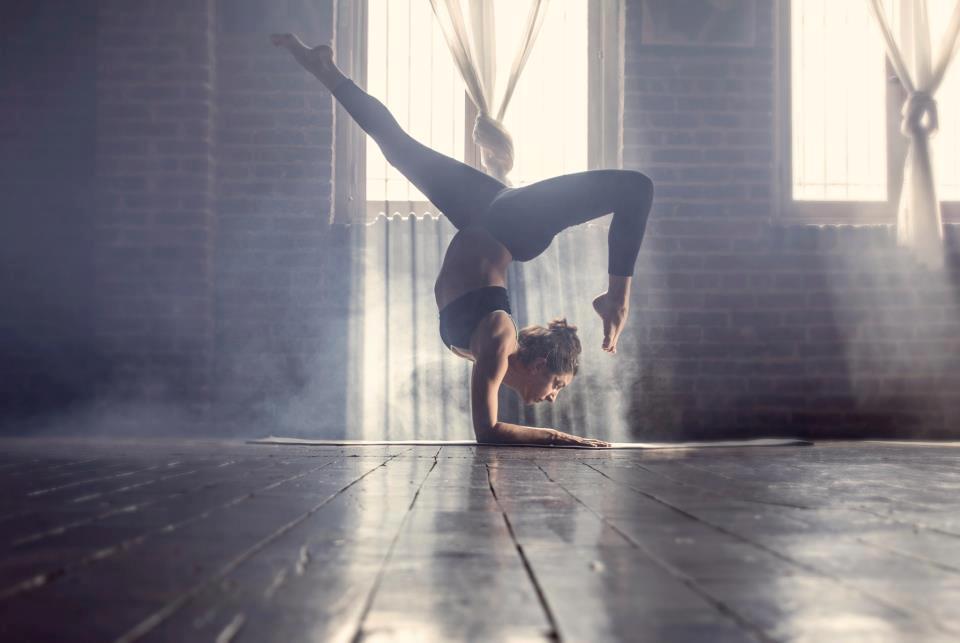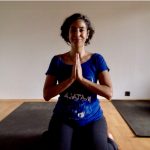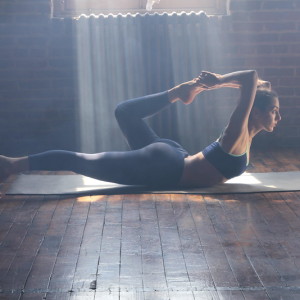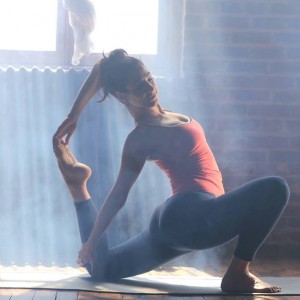Quintessence: Asana & Energy ~ Maya Devi Georg
In Latin the word quintessence refers to the fifth element, that which permeates all others. Today, it means the most perfect example or embodiment of a thing.
We rarely see this word in yoga, and yet we should. Every practice is related, as is every pose, and every breath. When we realize this we can begin to experience our practice in new ways.
It is the Taittreya Upanishad that states that the universe is five-fold. There are 5 Koshas and 5 major Prana Vayus.
And there are 5 types of poses.
My teachers explained to me that the first asanas were seated meditative poses, namely, Sukhasana, Padmasana, Swastikasana, Virasana, and Siddhasana. Each of these asanas specifically affect the flow of energy through the body and therefore affect the meditation.
All other asanas evolved from these original 5.
Hatha Yoga (and any practice that includes asana is Hatha Yoga) works by manipulating the physical body, our grossest form, to affect our most subtle. As we move our body we affect the subtle energy, increasing or decreasing energy flow to regions, creating new circuits for the energy to flow, and even recreating yantras with the body. In some instances we can use the physical body to reflect the flow of energy of the macrocosm. We can do this in individual poses as well as in sequences.
Unfortunately, yoga asana is usually taught one pose at a time, that is, that each pose is unique and often unrelated to all other asanas. Even in vinyasa yoga, the poses are linked through movement, but not through the subtle, and the focus is kept only on the physical body and the appearance of the pose.
There are three Warrior poses, all standing postures, but appearing vastly different. They may have the same name but no time is spent analyzing what essentially makes them the same pose. We can explain some of this away by claiming they stem from the same myth, but that does not explain how they are related or help us deepen our understanding or experience of the asana.
All of yoga is inter-related. Every asana shares a common source, that makes every asana connected. And understanding this can change your practice.
I was very lucky to have studied with amazing teachers. They taught asanas in a way that allowed you to intellectually understand, and intuitively feel, how all asanas were related.
After studying with my teachers, and reading many yogic texts, I incorporated those teachings into this perspective of yoga asana and developed it into my own way of teaching asana.
This is the heart of Brahmaloka Yoga, the style of yoga I developed with my husband and partner.
The Five Types Of Poses
Classification is just a fancy way to say “naming”, and we name things so that we can know and understand them better. Classifying asanas is no different. We name different poses to recognize them, and we classify them so that we can understand the purpose of the pose, and the benefits it can offer. This may help some dedicated practitioners to feel the subtle effects of the postures.
Following the “lowest common denominator” school of thought, some claim that all asanas can be broken down into one of two kinds of poses: Strengthening Poses, and Stretching Poses. There is some truth to this belief.
Strengthening Poses are poses that build strength by engaging muscles. They are sometimes dynamic and often performed at the beginning of a practice. Many people assume that this is because they are warming. While that is true, it is not the most important aspect of Strengthening Poses. These postures help to rapidly fatigue muscles, and this helps prepare the body for Stretching Poses.
Stretching Poses stretch the muscles to build flexibility. These poses are meant to be more passive, and some consider them cooling. I think this depends on the pose, in my experience holding an uncomfortable asana for an extended period of time will build a lot of heat in the body, and can even increase heart rate.
When we practice Stretching Poses, we should try to relax into them. Unfortunately, the muscles we are trying to stretch will fight by engaging or clenching (hint: if they are doing that they aren’t stretching!) That’s why Strengthening Poses and their ability to exhaust muscles should be practiced first.
However, too many postures blur the line between the two, and while many poses are a combination of many different types of asanas, I believe that poses are best categorized into five basic types.
The order of these poses is from the easiest to the most challenging. When sequencing poses for a practice this order is very beneficial for both a well rounded asana practice as well as positively impacting the subtle body.
Have you ever taken a yoga class that made you feel sick afterwards?
I have.
It’s usually the result of a bad sequence. Sequencing is often misunderstood, and difficult to grasp (which is why most teacher trainings only certify one sequence.) By understanding the classification of asanas we can better understand the sequencing used by various schools of yoga. As our understanding of asana, Prana, and Kosha advances, we can also better understand the different benefits derived from sequencing, as well as the way sequences can affect our subtle energies.
Of course, there are many differing opinions and approaches to asana, but this has been the core of my teaching for over a decade.
Expansions
Expansions are primarily strengthening poses that focus on expanding and lengthening the body. Often the appearance of these poses seems to be on the limbs extending away from the body, but the most important aspect is lengthening and extending through the spine and outward.
As you sit and read this you can take a deep breath and try to make yourself taller, make the spine longer. Most of the movement of the asanas begin at the base of the spine, so starting at the base of the spine, inhale, lift and lengthen. This is the essence of expansions.
Even the movement of the limbs should be coming from the center of the body; arms extending through the shoulders from the spine, legs extending through hips from the pelvis. All poses rely on the qualities within extensions. But the postures that are purely extensions are primarily balancing and standing postures (like the warrior poses).
The Prana Vayu associated with extensions is Vyana Vayu, “outward moving air.” This energy permeates the entire body and is responsible for coordinating and creating a cohesive sense of self. It is the energy of connection, and maintains homeostasis. Vyana Vayu also helps us maintain balance, within ourselves and our environment.
Inversions
Inversions are also primarily strengthening poses and are created by turning the body upside down. Handstand, headstand, forearm stand, and shoulder stand are the most obvious inversions. The movement here is inverted, beginning at the head, hands, shoulders, etc., lengthening and lifting from the top down.
While these poses are great for impressing your friends at parties, they are actually simple poses requiring very little flexibility and strength.
I know it may be a shock to some to hear that these poses are considered easy. But they are as hard as learning how to stand on our own two feet. Granted, we did that as babies. But learning to stack our spine and hold ourselves upright are the same, right side up or upside down.
What makes Inversions difficult is the fact that they are terrifying. (Every type of asana also has a corresponding emotion.)
I have found a very strong correlation between those that fear inversions and those that experience social anxiety. A big part of learning inversions is learning how to fall, and while falling can be scary, for many people what is worse is being seen falling. Inversions, and conquering the fear of inversions, has helped many people overcome their social anxiety.
In Hatha Yoga, inversions are believed to keep the body young, and in some aspects they do. Being upside down aids in digestion by helping to keep the colon clear, super oxygenates the brain, helps bring blood back to the heart, and keep lymph moving.
Prana Vayu is the energy of inversions. Prana Vayu literally means “forward moving air” and is the upward and inward moving energy. It is the energy that receives and assimilates; it receives air, food, and water, as well as sounds, sights, smells and tastes. It is the energy that allows us to sense and perceive, and thus it is our interface with the world. Prana Vayu is also a driving force of all other Vayus. There is a reason that the queen and king of poses (head stand and shoulder stand) are inversions, and that is because these poses are most effective at maintaining good health.
Back Bends
Back Bends are considered both Stretching and Strengthening Poses. These poses stretch the front of the body, opening the throat, shoulders, chest, abdomen, as well as the psoas and quadriceps. Backbends strengthen the back greatly and many of these poses require a lot of strength.
The movement here also begins at the base of the spine, the pelvis is pressed forward (think pelvic thrust) and the lengthening the occurs is bottom to top as the back engages and contracts to expand the front of the body.
These are energizing postures and are desperately needed in our modern life. We spend most of our life in a forward bend: sitting at a desk, in a car, or on the couch; we stare at a phone or computer screen tilting our head down and straining our necks. We need to stretch our bodies in the opposite direction.
Unfortunately Back Bends are often done with the most stretch coming from the lumbar spine (lower back). This is the most flexible, yet least stable part of the body. The stretch should be focused through the psoas and pelvis as well as chest and shoulders, while strengthening the lumbar spine.
The Prana Vayu that rules back bends is Udana Vayu. Most often associated with communication and cognition, it is “that which carries upward,” the energy that is the force behind growth. It rules the region of the neck and head, but the specific breath it is associated with is the exhalation that creates sound.
Many people are uncomfortable practicing backbends, and not just because modern life has us in perpetual forward bends. Many back bends require us to fall, just like inversions, but where our hands or heads are planted on the floor in inversions, in back bends we must reach for the floor. I have seen students learning how to fall backwards flinch away from the floor, draw their arms into their chest, and collapse their body into itself. They retreat away from the back bend into a modified fetal position.
Think of this in metaphoric terms: a fear of reaching for something. Those that are uncomfortable with backbends often have a hard time voicing their needs. Back bends can help people find their voice.
Forward Bends
Forward Bends stretch the back of the body, including hamstrings and calves, neck and spine. Most people focus the stretch through the backs of the legs, and really sabotage getting the stretch where it is most needed; the spine.
We spend most of our life in forward bends. But we do them poorly, slouching and curving our spine, collapsing into ourselves. The movement of forward bends should begin in the pelvis, pressing the buttocks back and lifting the base of the spine upward, while keeping the extension in the spine at all times.
Many forward bends can be resting and passive poses, both cooling and calming. Poses like downward facing dog and child’s pose are called resting postures. Finding rest in downward facing dog eludes most practitioners. This rest is all about surrender, and allowing the body to relax into the pose.
These poses are meant to be passive. This includes hip openers like fire log pose or pigeon pose. Forward bends are as much about the mind as they are about the body. Releasing the body and finding rest while the body is uncomfortable is one step towards turning asana into meditation.
Samana Vayu is the energy of forward bends. This “balancing air” governs assimilation, the absorption of nutrients from food and oxygen from air. It is also responsible for separating those nutrients from toxins. From an emotional perspective, Samana can help us look into our past and appreciate the good, while distancing ourselves from the bad.
Forward bends can be deeply meditative and can carry us into our own memories. Being able to absorb the good and happy memories and discard the painful is a powerful use of these asanas.
Spinal Twists
When most practitioners think of Spinal Twists they think of reclining and gently rocking knees side to side. But Spinal Twists are often the most challenging poses to master.
They require flexibility through the hips, entire spine, ribs, chest, shoulders, neck, and even into the eyes. They make the spine more supple while massaging internal organs.
They are known as “wind relieving poses” because of how effective they are at maintaining good digestion and keeping us regular. Like in forward bends the movement begins at the base of the spine and moves upward, spiraling through the entire body and ending at the eyes.
Apana Vayu, “the air that moves away,” is the downward moving energy associated with elimination and focuses on the lower abdomen, the kidneys, bladder, rectum, and genitals. Responsible for everything from urination to child birth, this energy is associated with the earth element. This energy is both destructive and creative.
Emotions here vary. Thoracic twists can result in grief and rage, while twisting through the pelvis (to be practiced carefully to avoid destabilizing the sacrum) result in creativity and release.
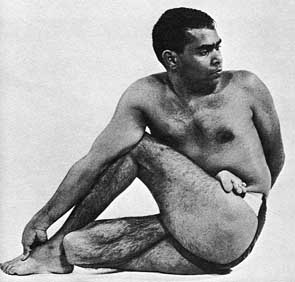
Most asanas can be twisted or revolved and many variations of twists go into the realm of the irrational (have you seen a full Matsyendrasana?!?)
There are many poses that capture two or more qualities of these five types. Scorpion pose is an inversion and back bend, compass pose is a forward bend and a twist, king pigeon pose is a forward bend and a backbend.
Of course we can continue classifying poses: arm balances (forward bends), side bends (technically backbends), seated meditative poses (also forward bends), binds (twists), hip openers (again with the forward bends), balance poses (usually expansions), etc.
Most poses are a combination of two or more of these classifications. When we start to see the mechanics and energetics behind the poses we can begin to cultivate those benefits through a heightened awareness of our breathing, as well as more considered approach to sequencing. This allows us to maximize our practice, rapidly advancing in asana as well as in yoga as a whole.
The more we understand our practice, the more we can use it to become better and more well-adjusted people. The goal of yoga is not to get a perfect handstand, or to have cute behind. The goal of yoga is to become enlightened, to be freed from karma and the chains that trap us in a cycle of life and death. The goal of yoga is to find ourselves unified with all things, everywhere, and to become divine.

